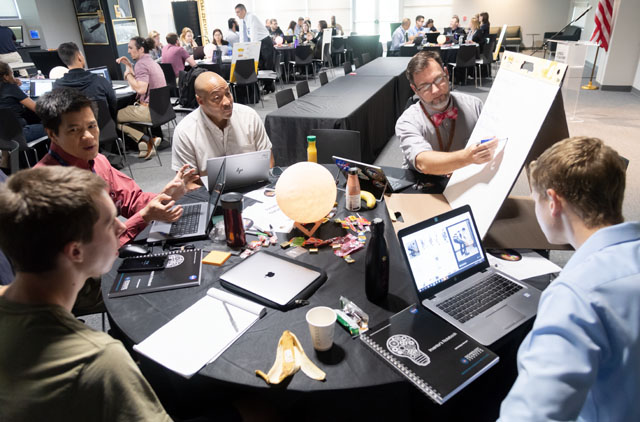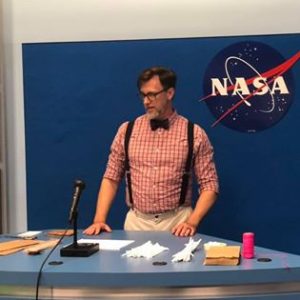
Erika Harris, Director for Marketing & Communications, sat down with Master of Infrastructure Planning & Management (MIPM) Alumni, Steven C. Smith, to find out what he’s been up to since graduating.
Let’s jump in. What’s your name, position, and title?
S: I’m Steven C. Smith. I use my middle initial because I’m so generic and there are 13 Steven Smiths who work at NASA. My title is NASA STEM EPDC education specialist.
Can you tell us what your title means?
S: My job is to amplify all of the things that are going on at NASA. One thing we do is create resources for students and teachers. We have a Crew-1 launch coming up with our commercial crew partners, SpaceX and Boeing. Our first official mission launch will happen with four astronauts flying to the space station. My job is to talk about this and create things like mission toolkits that teachers can use. We create things like engineering design challenges, which is where my background in MIPM comes in. I can systematically think about those things and create activities like lunar habitat challenges.
What led you to this job with NASA?
S: My background is as a teacher and in academics. I’ve done a lot of different things. I have a certificate in paralegal studies, an associate degree in education, a bachelor’s degree in neuropsychology with a minor in art, and the MIPM degree. I was in the military when I was very young and when I got out I didn’t know what to do. I ended up landing in education and n some way shape, or form, I’ve been an educator since 1997. I went to a conference while I was teaching. There was a NASA representative there who was sharing some of the wonderful things you could do if you had things like robots in your classroom.
My question to him was, “what if you aren’t 100% sure that you’re going to have textbooks?” So, he and I had a conversation and I ended up talking to the person who is now my boss, at Texas State University. I applied for a couple of positions there and the group that I work with ended up creating a position to pull me in. I was working for NASA through Texas State for a year when a position opened up at Johnson Space Center. I switched over there and have been working out of the Johnson Space Center right with all the astronauts for three years now. I still collaborate through Texas State University, but get to go all over the country and share the experiences I have working with low-income schools, with teachers. I have the privilege of getting to work in diverse communities and predominantly African American schools.
Even as I thought about doing something else, I kept landing back in education positions and it’s ended up being the thing I love very most in the whole wide world. That along with my MIPM background comes together in this one amazing thing that I get to do for a living.
What was your focus in the MIPM program?
S: The thing I focused on was food and sustainable food infrastructure. I did a paper with Barbara Endicott-Popovsky that was all about rethinking communities and creating these self-sustaining small communities. I ended up working with a group called Atlanta Food and Farm who works in urban agriculture to help improve food security in local communities, especially in areas with lower incomes. I eventually ended up back teaching biology and bringing those ideas and thoughts with me in the curriculum.
What’s something about NASA that not everyone knows?
S: NASA prides itself on its efforts in diversity and inclusion. The organization I work for has a direct edict to focus on and reach institutions that serve traditionally underrepresented communities, spending millions of dollars each year to make certain the next generation of STEM leaders are reflective of the wonderful diversity of our country. As a response to the current unrest, NASA added Inclusion as a fifth agency-wide NASA Core Value for mission success.
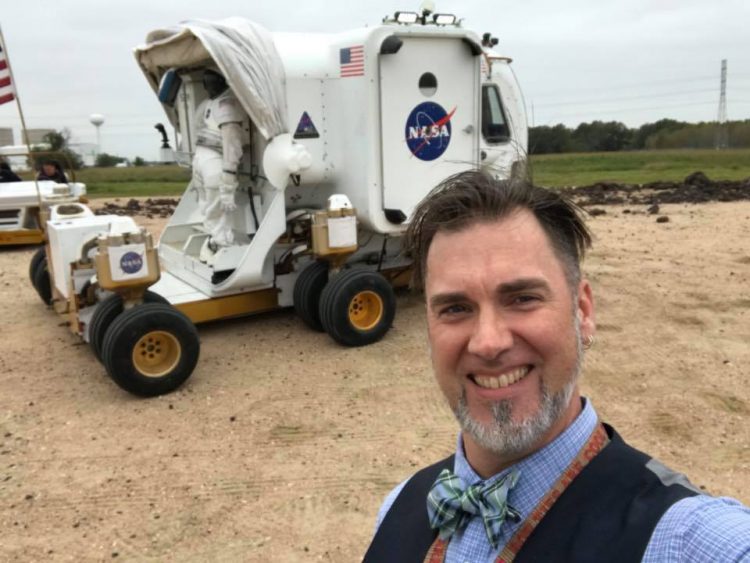
What do you enjoy most about your job?
S: I have gotten good at reaching students who have a different background than me. I enjoy using my own childhood experience to reach students. I’m open to learning the culture of the students in front of me so that I can reach them in a relevant way. I get to go all around the country and share those ideas with teachers and push them to understand, encourage them to drop their assumptions, and understand the culture in front of them to help the students use the things that they already know and are familiar with. They then use that to help understand bigger concepts and use those in a critical way, which comes back to that systems thinking, thinking in a broad, global way — which is thinking that I picked up in my master’s degree. It’s just a dream job. Amazingly, they pay me to do what I do.
Tell me about how your time as a MIPM student has contributed to your current work?
S: Absolutely. One of the activities that I created has students design a habitat for people to live in that is not here on Earth. I started this as a final project for my students in environmental science. I thought, what better way for them to show me that they understand the environment here than to create something for an environment that is not here. They had to think about things like how ecosystems work, the closed loops that we have as opposed to when we build an environment. When we build an environment, we tend to build open loops. You have energy input, something happens, and then there’s a waste product. You have to go back, whereas nature doesn’t work that way. And so having worked on my own community model in my MIPM program, it gave me a better understanding of all the activities I could put together. I take this activity all over the country and it challenges students to think when creating these habitats. When they do, they have to think about infrastructure, where the water is going to come from, where food is going to come from, where they are going to get energy, how they are going to communicate, and how they are going to take care of themselves when they get sick. It pushes students to think in a complete way about how those individual pieces have to work together and they have to work together themselves. I use the six infrastructure systems that we did in class — food, water, energy, public health, communication, and transportation — to create the groups that then work together. A lot of the time people who are working in the water group, figure out that water has to get from place to place and as they figure that out that they realize they could put in turbines to create energy, so they figure out they have to work with the energy people. It’s the same thing with food because if they grow food that’s going to make oxygen and the plants would scrub carbon dioxide both of which are good things. So they’re thinking about these things in a systematic way, the same way that I learned in my program at UW. The program also helped in understanding how the infrastructure of the different places I go affect the teachers and students who are there.
How do you make all students feel included in space and science work?
S: This is what I teach teachers, pretty specifically. To simplify, I would narrow it to three things:
ensure students feel heard and seen; ensure students understand how and why the curriculum is relevant to them; ensure that students believe the teacher/presenter cares about them and is invested in their success. There is an educational philosophy called either Culturally Responsive Teaching or Culturally Relevant Pedagogy (depending on which book you are reading). It’s based on the idea of using an individual student’s own culture to reach and engage them in their learning. While this can seem challenging if the teacher isn’t from the same culture as their students, coming from the “outside” can be a strength. No one can be expected to be an expert on every culture. So instead of walking in assuming expertise, the teacher prioritizes asking leading questions and creating opportunities for students to share their experiences. The teacher also has an onus to share their own (relevant and appropriate) stories and culture, both finding common ground and teaching students to appreciate and celebrate variety and diversity.
What’s something fun you’ve gotten to do while at NASA?
S: We had this wonderful hackathon where we had to design a chair that would work whether there was no gravity, partial gravity, or full gravity. So we had to be able to understand how all of those things work together in one design. I got to design a chair and my chair is going to the moon someday!
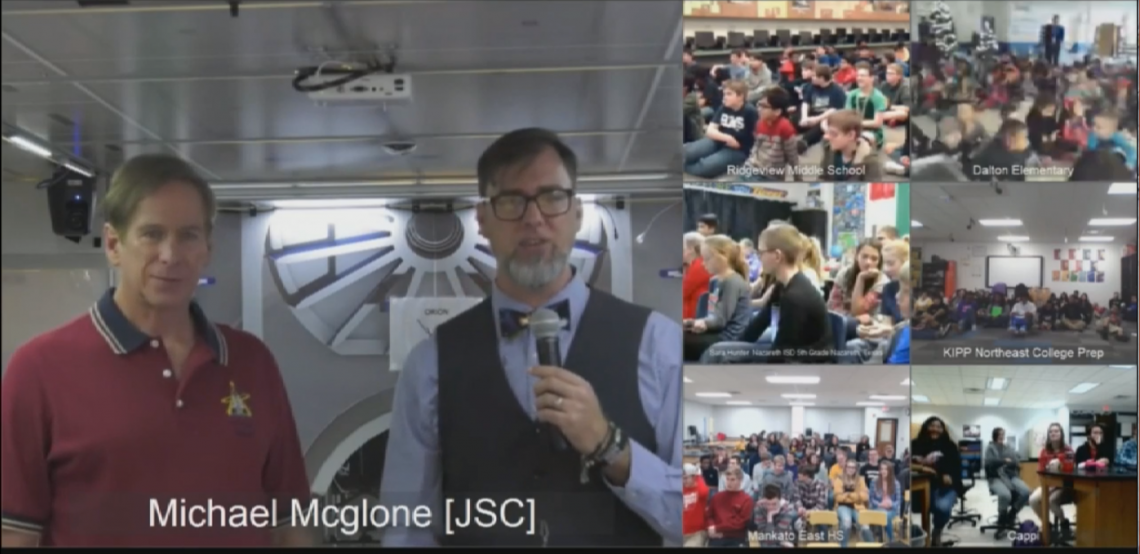
I’d love to know what’s your proudest moment or a project you’re most passionate about.
S: I think the thing I’m proudest of is that I got to deliver my first ever professional paper during my time in the program. Our head at the time, Dr. Barbara Endicott-Popovsky, believed in me enough, and my work, that she put her name on this paper with me and that meant everything. Getting to deliver it in front of a group of professionals and having it well received, really sparked in me the thing I love most which is speaking in public. And in large part, that’s what I do for NASA.
Did you have any key mentors or people who deeply influenced who you are, what you believe in, and what you’re committed to in your work and life?
S: The thing I liked about the program at UW was how there were several standout professors. Dr. Barbara Endicott-Popovsky who put her name on a paper with me, but also Bob Freitag. They just had this way of listening to the thing you had to say and then pushing you a little further so as not to accept mediocrity. Branden Born was another who would really listen to what I was thinking and then had that way of asking questions to get you to think more deeply.
The importance of role models in my life translates directly to my current work at NASA. Our last class of astronauts (2017) looks so much more like all of us. The class is half female, includes ridiculously qualified individuals who are Asian, Latinx, and Middle Eastern. They include glass ceiling breakers such as Kayla Barron, who was in the first class of US Navy submarine officers to include women. We have “Girls in STEM” and engineering programs that focus on showing young women and girls that science, technology, engineering, and mathematics are FOR them. NASA also has Employee Resource Groups (ERGs) that run the gamut across ethnic backgrounds, gender, sexual orientation, and more. These groups not only support the employees from those groups but do a tremendous amount of outreach as well.
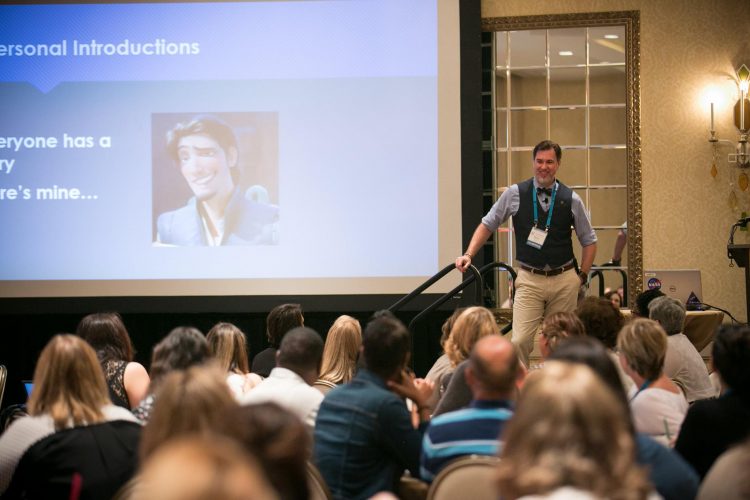
Can you tell me what’s next or what you’re working on with NASA?
S: I think where we are heading is even cooler than the golden age of NASA. In addition to the amazing work that we’re doing with our commercial partners, SpaceX and Boeing. NASA is pushing farther out into the universe. We are going back to the moon but,this time, not just to plant the flag. This time we’re going as partners with these countries in a sustainable way. We’re taking a lot of the things we’ve learned about sustainability, the kinds of things that we learn in the MIPM program — reusability, closed-looped systems, and how systems work together — so that these astronauts are going to be able to stay for weeks and months at a time.
So, I fully believe– and this is Steven, not NASA speaking now– that within the next decade you’re going to be able to go outside and look up at the moon on a new moon night and see lights shining back at you from human beings living and working on the moon.
My job in education, the coolest way I can think of to put it is that we’re going to Mars in the late 2030s and that astronaut who leaves the first footprint on Mars is sitting in a classroom somewhere. There’s a kid in middle or high school right now who is going to be that first person. And in a way, it’s my job to reach them.
Any final words of wisdom you’d like to share?
S: Here’s the one thing I share with most of the schools. In high school, my life imploded. My stepfather passed away, things went haywire at home. I ended up, in what should have been my senior year, getting kicked out of school basically for truancy because I stopped showing up. I was showing up for lunch and choir, but other than that, that was it. One afternoon, the vice principal said, look, if you miss one more time we’re going to kick you out. Of course, with the wisdom of youth, that was basically a dare to not come back, which is exactly what I did. I ended up going into the Navy and got my GED while I was in. I went from being the kid who had no high school background, couldn’t get it together to finish out senior year, to now having all of these certificates and degrees, getting to go to the University of Washington and be able to put that on my CV and I work for freaking NASA. Point A to Point B sometimes isn’t straight, and that’s okay. Just keep doing what you like, and don’t give up on yourself when that line isn’t going straight.
